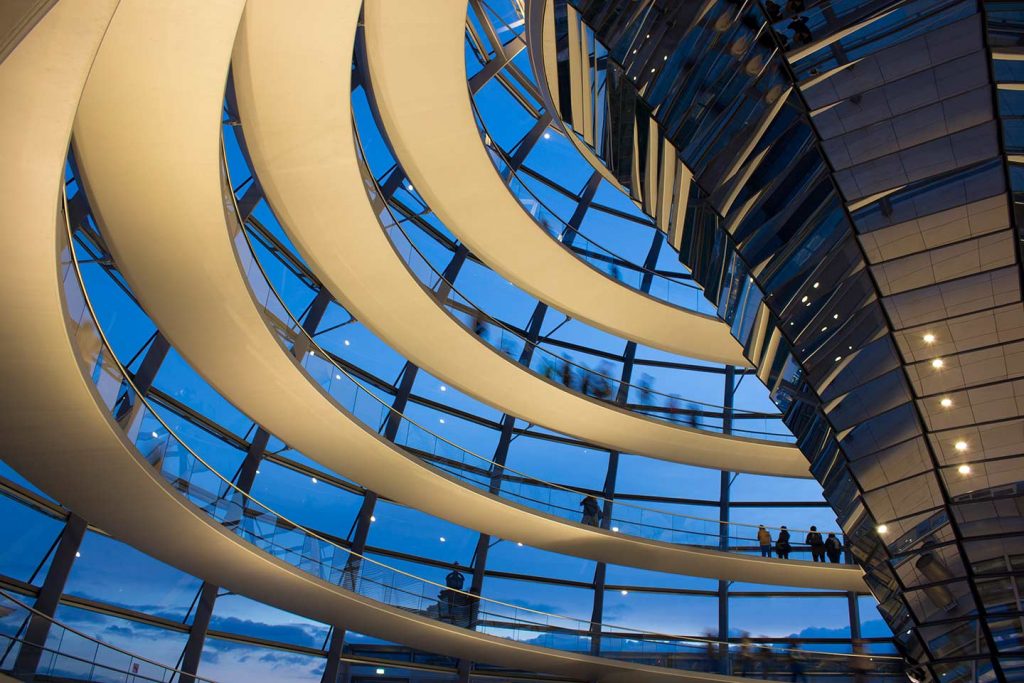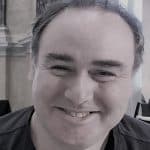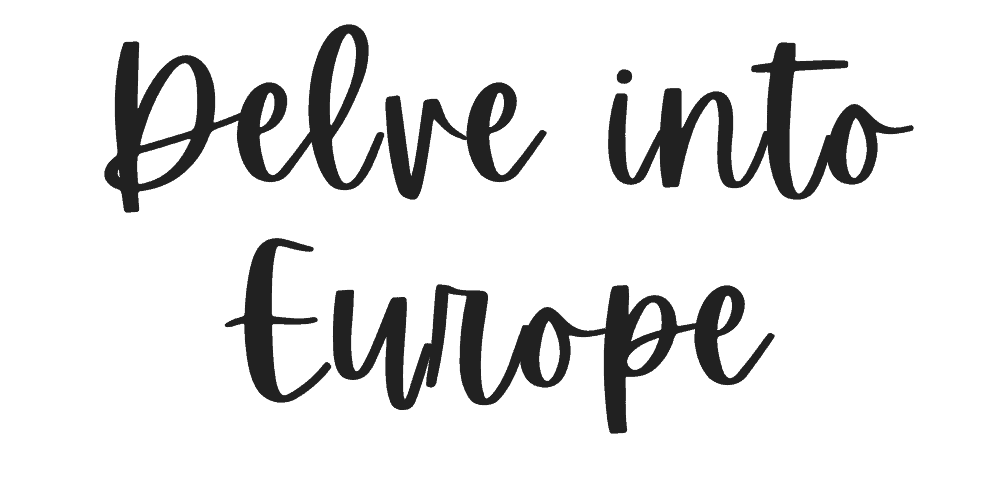About the author: David Angel is a British photographer, writer and historian with 30+years experience exploring Europe. His work regularly appears in global media including the BBC, Condé Nast Traveler, and The Guardian.
Photographing Berlin is a wonderful way to get under the skin of the German capital and learn some of its fascinating history.
Your photography in Berlin will have a different slant to that in other European cities like Prague or Budapest. Much of Berlin is still gritty rather than pretty, and I’ve always felt enlivened by the buzz and energy of the city, not to mention its recent history.
It’s one of the more progressive cities in Europe, and that makes for a compelling photographic journey.
Places as varied as the remnants of the Berlin Wall to the apartment buildings and parks of Kreuzberg have some astonishing street art to discover.
In this Berlin photography guide, I’ll show you the more conventional Berlin sights and suggest the best times to photograph them. I’ll also show you the more off-the-beaten-path parts of the city, discovering less-known Berlin photo spots that are every bit as intriguing.
These are the best places to photograph in Berlin.
1. Brandenburg Gate – Brandenburger Tor


The Brandenburg Gate is the most iconic Berlin building, partly because its time marooned alone next to the Wall when it became a potent symbol of the division of the city.
The site is unrecognizable from 1989, except for the monument itself which has been restored and looks magnificent.
The square in front of the Brandenburg Gate, Pariser Platz, is pedestrianized. New buildings have been built right up to the Gate, and the square gardens have fountains to give some visual interest.
In a way it’s fairly similar to city photography anywhere in the world, and especially with such a familiar Berlin landmark. Rule number one – it nearly always looks best at night.
Rule number two – look around to see if there are other elements you can incorporate into your compositions. One option is the fountain. Another is using the side arches to frame the main Gate and statues on the top. And rule number three – get there at an ungodly hour for first light when everyone else is fast asleep.
Don’t try this with everything as you won’t have enough time. But for top Berlin attractions like the Brandenburg Gate, it’s absolutely worth the effort.
2. Berlin Wall

The Berlin Wall is naturally going to be near the top of many people’s Berlin photography wish list, especially for first-time visitors.
Most of the Wall was obliterated in the aftermath of the end of Communism in 1989, but some sections remain, kept for commemorative purposes, and a line also follows the route of the Wall along roads and pavements around the city.
The most popular Berlin wall photo spot is along the East Side Gallery on Mühlenstrasse, which runs along the river Spree in Friedrichshain.
It’s 1.3 km long, and contains a series of iconic murals which are regularly updated.

These include Dmitri Wrubel’s painting of Leonid Brezhnev and Erich Honecker locked in a kiss, and Birgit Kinder’s Trabant – an East German car – crashing through the wall.
If you want sunlight on it, you’ll get some during the longer mornings between April and August, though this doesn’t really matter. This is the ideal spot to come if you’re photographing Berlin on a dull day.

The best-known of the other Wall-related places to visit in Berlin is the Berlin Wall Memorial on Bernauer Strasse. This is the only preserved strip of the complete Wall, with two sections of Wall, the ‘Death Strip’ in between, barbed wire and a watchtower.
I thought this sounded promising, but your photographic options are rather limited as the only view you get of it is from the viewing tower across the street.
Well worth the visit, but I was hoping for something more photographically, but there wasn’t anything to help convey the confinement and fear everyone had to live with.
3. Bundestag – The Former Reichstag Building

The Reichstag building is one of the must see Berlin sights, and it’s one of the best places in the city to photograph as well. The exterior is impressive enough, and your eyes are drawn to the frieze above the portico with the inscription ‘Dem Deutsche Volke’ – For The German People.
The most popular feature of the Reichstag building is its glass dome, complete with spiral walkway. You need to register your visit in advance (we registered lunchtime and visited in the evening) – it’s free, and staff were more than happy to let photographers use tripods.
It’s magnificent, with 360 degree views across the city. You can also explore the terrace outside which has great views of the dome up close and an unusual elevated side-on view of the Brandenburg Gate.
4. Memorial to the Murdered Jews of Europe



Also known as the Berlin Holocaust Memorial, I was surprised to find that this vast cemetery-like memorial had some of the best opportunities for photography Berlin has to offer.
The site occupies a large area one block to the south of the Brandenburg Gate, and was conceived as a field of blank stelae or blocks.
It’s an amazing subject for abstract photography that I’m surprised more people haven’t cottoned onto over the last decade or so. The abstract element comes from cropping in close on just about any area of the monument. Then wait for the light and the play of shadows.
If you have someone with you, persuade them to model, standing strategically to the side of your frame of view. If they’re wearing a bright colour like red, all the better, they’ll stand out and so will your image.
I’ve shot it in very early morning light, and this enabled me to get the rays of sunlight shining down onto the stelae. You could shoot it at any time of day, but early and late light often yields the best results.
5. The East Berlin Ampelmann

Many pedestrian crossings in what was East Berlin still have the quirky little green men traffic lights which many fought to keep after the fall of the Wall. They have become Communist kitsch these days, and there are six souvenir shops around Berlin dedicated to them.
You’ll find them all over the former East Berlin. As for photographing them, I’ve always kept an eye out for background features, such as the out of focus Quadriga on the Brandenburg Gate above, or the Fernsehturm TV Tower, another Berlin icon.
6. Alexanderplatz and the Fernsehturm TV Tower


Alexanderplatz is the showpiece square of the GDR, a large wide concrete space with its own name up in lights, and two well-known Berlin landmarks.
The smaller of these, the Welt-Uhr, is a distinctive round clock telling the time all over the world – with an emphasis on the Communist world that was.
Taking a lift up the Fernsehturm is one of the touristy things to do in Berlin, but I wouldn’t do so if you’re looking to conserve shooting time.
The view from 203 metres above the city is very impressive and there’s a huge amount to see, but that high up, through glass windows, you’re not going to get great shots.
7. Museumsinsel – Museum Island and Berliner Dom


You could spend days visiting the museums on Museumsinsel, though photographing them is considerably shorter work.
The Pergamonmuseum, Bodemuseum, Neues Museum, Altes Museum and Alte Nationalgalerie occupy most of the island, their Berlin Neoclassical facades make for a harmonious ensemble.
They share space with the broad Lustgarten park and the gargantuan domes of Berliner Dom, which is sometimes called Berlin Cathedral. The latter features on many what to see in Berlin lists, and it’s worth a stop to photograph too.
You could try some angles with the statues on the Schlossbrucke, or along the river from the nearby Friedrichsbrucke at night.
8. Gendarmenmarkt – the Deutscher Dom, Französischer Dom and Konzerthaus

Gendarmenmarkt is the finest square in Berlin, one of the most beautiful squares in Europe and the setting for the Berlin Christmas markets.
The centre of the square is dominated by the Neoclassical Konzerthaus, with the statue of playwright Friedrich Schiller outside.

There is a church at either end of the square (the German Church at the southern end and the French Church at the northern end), each with similar domed towers. It’s probably the most striking ensemble of buildings in Berlin, and really comes into its own as a photography subject at night.
The Konzerthaus, Schiller statue and Deutscher Dom are all lit at night, so get there for the blue hour and make hay while the sun is set at one of the best Berlin photo locations.
9. Potsdamer Platz

Several locals have told me that the redeveloped Potsdamer Platz is one of the best Berlin photography spots. I can see why people would like it – one of the best things about photographing cities is shooting the clusters of skyscrapers. If you haven’t had the opportunity to do so before, photographing architecture like this can be very exciting.
It’s one of the few Berlin photography locations that I am yet to shoot at night, when I would imagine it looks at its best. However, I have passed through on the way back from other locations, and noticed a lot of light pollution there.
The DB (German Railways) headquarters is considerably brighter than some of its neighbours, creating a potential ‘contrast trap’. There are two solutions to this – catching the twilight early, nailing it in a single frame soon after the lights come on, or going down the HDR route and blending exposures.
10. Jewish Museum – The Memory Void

Daniel Libeskind’s Jewish Museum is one of the most compelling Berlin tourist attractions, and his zig-zag-shaped building is one of the most striking contemporary buildings in Berlin.
It contains the Memory Void, a deep chamber filled with an installation, Shalekhet (‘Fallen Leaves’), by Israeli artist Menashe Kadishman.
The floor is filled with 10,000 circular metal faces, many of which appear contorted with anguish and pain. Visitors are invited to walk over the faces, and the loud sounds of the metal faces clanking, rattling and echoing around the narrow chamber.
It’s a deeply unsettling experience. It’s also a compelling photographic subject, whether you crop in on some of the faces or show someone walking over them.
11. Berlin Street Art

We’ve already touched on this with the East Side Gallery, but there’s so much more street art in Berlin to discover, making for some amazing photography along the way.
I always thought the fact that the city has been at the forefront of history has given it a bit of an edge when it comes to street art, and I’ve found so much new art each time I’ve visited.

I’ve always found Kreuzberg to be a happy hunting ground for street art. Cross the Oberbaumbrucke from the end of the East Side gallery and head straight on. Some of these residential streets have great murals on typical apartment houses, giving the area a different feel. Continue to Gorlitzer Park where you’ll find more murals including the one at the head of this article.
From there you could head right towards Oranienstrasse, the main street in Kreuzberg, with graffiti aplenty in doorways and side streets.
Or you could continue in a southerly direction towards the Landwehr Kanal. The twice-weekly Turkish Market on Maybachufer (1100-1830 Tuesdays and Fridays) is a great place for street photography and some wonderful Middle Eastern food.
12. East Berlin Architecture And Design – Karl-Marx-Allee, The Plattenbau And More

If you’re keen on photographing East Berlin post-war architecture head straight for Karl-Marx-Allee, running from Alexanderplatz through the district of Friedrichshain.
It’s a vast boulevard flanked by what were luxury apartments in the Socialist Realist style that originated in the USSR. The best place to photograph the street is around Frankfurter Tor U-Bahn station, where the twin towers and domes and street signs give you something other than the rows of apartment windows stretching to infinity.
Further down, Strausberger Platz – probably the widest roundabout I’ve ever seen – is the culmination of this Communist architectural feast.


Away from the showpiece, East German families often had to live in plattenbau, vast estates of prefabricated concrete apartment blocks. I’ve been past the many tower blocks of Marzahn several times, and a few friends who have lived in the city have confirmed to me that it’s the best place to see the plattenbau.
You can also climb to the top of one of the apartment buildings on the Skywalk Marzahn which offers a unique perspective on Berlin and the surrounding countryside.
1980s East Germany was also known for its bland brown décor, and until recently you could stay in a hotel – Ostel – full of rooms in this unique period style.
Sadly the hotel’s future is uncertain in the wake of the Covid-19 pandemic, so you may have to look elsewhere for your DDR wallpaper fix. I’ve borrowed the above shot from our shoot at the Retro Museum Prague.
I can assure you that such wallpaper was de rigueur in the 1980s right across the world, from my home town Cardiff to Canberra it was very similar and just as hilariously bad.
The re-created plattenbau apartment in the DDR Museum had some pretty bad wallpaper, and is a good starting point.
13. Stasi Prison Cells

One way to quash any ‘Ostalgie’ trip is to remind yourself that the GDR was the most intensively surveyed police state in human history, with some historians reckoning that there may have been one informer for every six people in East Germany.
The DDR Museum has a re-created cell where the Stasi (secret police) would detain citizens they suspected may be up to no good, and this cell (pictured) only begins to hint at the grimness and desolation of the experience.
If you want to really see and photograph the Stasi environment, then you need to visit the Berlin-Hohenschönhausen Memorial. The former Stasi prison has everything you could hope to photograph – from grotty, miserable cells to forbidding prison corridors to interrogation rooms, watchtowers, barbed wire, banks of cathode ray TV surveillance screens and, yes, horrible floral brown wallpaper.
Numerous scenes from the excellent 2006 film The Lives Of Others were set and filmed there.
Photographing Berlin – Final Words

I hope you have enjoyed my guide to photographing Berlin useful, and that you enjoy visiting these locations and photographing them.
Also check out my article on the best Berlin landmarks to visit, which includes many more additional Berlin sights.
And don’t miss my guide to the best places to visit in Eastern Germany, which includes information on Dresden, Leipzig, the Harz Mountains and much more.
And finally, if you’re looking for further inspiration, check out my guide to the best places to visit in Germany. This covers the whole country, from the Bavarian Alps to the Baltic Sea and Trier in the west to Görlitz in the east.
Read next:
- Photographing Prague – The 13 Best Photography Locations In Prague
- Photographing Budapest – 16 Best Photography Spots In Budapest
- Photographing Florence – Capturing One Of The Most Beautiful Cities In Italy
And check out more of our articles on Germany here:
- Rhine River Castles – 15 of the best Rhineland Castles
- Marksburg Castle – awesome Rhine castle that was never captured
- Braubach – one of the most beautiful and romantic towns on the Rhine
- Rheinfels Castle – the largest and most imposing of the famous Rhine river castles
- Frauenkirche Dresden – stunning Baroque church rebuilt from the rubble
- Things To Do In Trier – 26 reasons to visit the oldest city in Germany
- Porta Nigra Trier – magnificent Roman gateway in this former Imperial capital
- Trier Cathedral – the oldest cathedral north of the Alps
- Völklingen Ironworks – awe-inspiring World Heritage Site near the French border
- Things to do in Saarbrücken – discovering Saarland’s little-known capital city

David Angel is a British photographer, writer and historian. He is a European travel expert with over 30 years’ experience exploring Europe. He has a degree in History from Manchester University, and his work is regularly featured in global media including the BBC, Condé Nast Traveler, The Guardian, The Times, and The Sunday Times. David is fluent in French and Welsh, and can also converse in Italian, German, Portuguese, Spanish, Czech and Polish.


